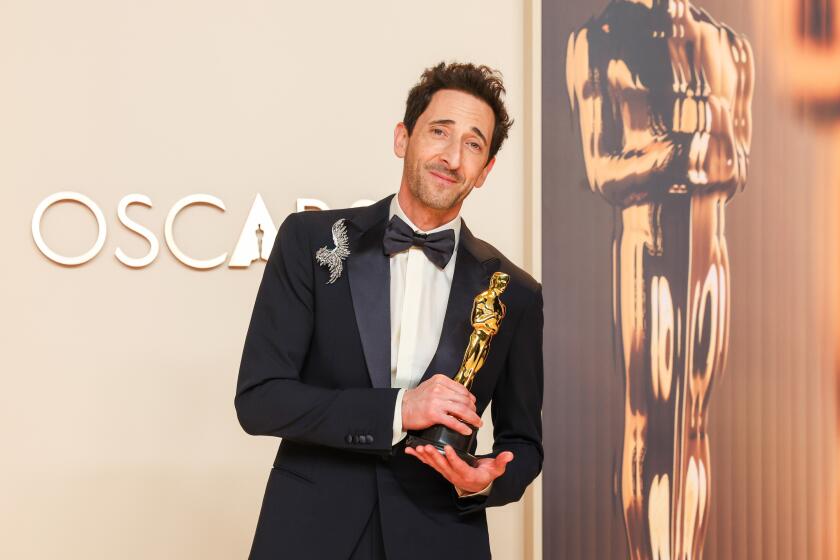The documentaries ‘Tower’ and ‘The Ivory Game’ examine very different kinds of killings
- Share via
Mass killings of very different sorts are explored in two documentary films shortlisted for the Academy Awards. Keith Maitland re-creates the 1966 mass shooting at the University of Texas in Austin in “Tower,” while Kief Davidson and Richard Ladkani investigate the daily slaughter of African elephants for profit in “The Ivory Game.” Here is a look at both films.
‘Tower’
No one took selfies in 1966. There was no 24-hour news cycle. America wasn’t yet a media-saturated society. The lack of that kind of documentation posed a challenge to filmmaker Keith Maitland, who in “Tower” re-creates the horrific day on Aug. 1 of that year when sniper Charles Whitman killed 14 people in under two hours and wounded dozens from a tower perch at the University of Texas at Austin.
There is archival footage of the event, which he makes use of, but the country’s first mass campus shooting had been left much unexplored over the subsequent 50 years, Maitland said.
“I’ve been curious about the subject most of my life,” said the filmmaker, a Texas native and 1998 University of Texas graduate who uses animation to reconstruct the shooting from the perspectives of multiple witnesses and victims. “Tower,” which won the Grand Jury Prize for documentary feature at this year’s South by Southwest Film Festival, is shortlisted among 15 titles for Academy Award consideration.
“From the get-go, I imagined it as an animated film,” said Maitland, who drew on journalist Pamela Colloff’s 2006 oral history, published in Texas Monthly, and his own extensive interviews with survivors. “It has an immediacy and an intimacy. This story needed that.”
Much of the film is in black-and-white rotoscope animation, which is based on images from live-action footage. The process, guided by animator Craig Staggs of Austin-based Minnow Mountain, was popularized by another local filmmaker, Richard Linklater, in the 2001 film “Waking Life.” Maitland constructed a screenplay from the interviews, and gave actors – of a similar age and bearing as the subjects were in 1966 – verbatim dialogue for live-action scenes, many of which he shot in his backyard.
As the story progresses, Maitland’s conversations with the real-life subjects come to light. The most poignant testimony is that of Claire Wilson, a then-pregnant 18-year-old who was shot at the beginning of Whitman’s spree. A fellow student named Rita races to her aid before others work up the courage to rescue her.
“It’s heroism of a kind you don’t get exposed to,” Maitland said. “There’s all these stories about cowboys and Indians, and it’s all about throwing the big punch. To me, the most heroic person on that day is the redheaded coed who risks everything to offer comfort to another person.”
‘The Ivory Game’
They weren’t far into shooting “The Ivory Game” when filmmakers Kief Davidson and Richard Ladkani realized that the project wasn’t to be a predictable save-the-elephants documentary after all.
The men were rolling undercover with investigative teams in pursuit of illegal poachers, following a trail across several African nations including Zambia, Namibia, Tanzania and Kenya, and on to China. There, the ivory trade captures rarefied prices while, according to the film, an endangered elephant is killed every 15 minutes.
“We started dealing with all these people who were like spies in a way or undercover agents,” Ladkani said. “They had all these code names for people like ‘Omega’ and ‘Alpha.’ We have only seen this in movies before: spy thrillers. We couldn’t shoot it any differently.”
Paced by risky encounters with poachers and black marketeers, the film, whose executive producers include Leonardo DiCaprio and Paul Allen’s Vulcan Productions, used surveillance cameras and often saw its crew in potential danger.
“You find ways to protect yourself and the crew,” said Davidson, whose Rwandan-set short documentary “Open Heart” was nominated for an Academy Award in 2013. “You have to look at the characters who are risking their lives every day.”
The gamble may already have had an impact. China recently announced its intention to eliminate the legal trade of ivory by the end of the year. “That was just the most unbelievable news,” Ladkani said. The filmmakers had been circulating the documentary in China, through unofficial channels, in hopes of it reaching government officials. Feedback has been positive. “We’re seeing the ultimate payoff right now,” Davidson said.
If the filmmakers return this year to screen “The Ivory Game” at a Chinese film festival, the experience will likely be much calmer than a near-catastrophic encounter captured in the film.
One of the film’s subjects, Andrea Crosta, founder of the whistleblower website WildLeaks, has a close call when a hidden camera is exposed during an undercover operation in a Beijing ivory store, and makes a run for it. The team also hastened to make a getaway. “They were traffickers related to the Beijing police,” Ladkani said. “We had to flee Beijing.”
What Davidson calls the film’s “elevated style” is meant to serve a purpose.
“It’s a tense, ecological thriller with a very, very urgent deadline that we hope people will pay attention to,” he said. “This is a film you can’t be afraid to watch because you might see a dead elephant.”
See the most read stories this hour »
ALSO:
Nice guy Chris Messina is thankful Ben Affleck saw his inner gangster for ‘Live by Night’
More to Read
From the Oscars to the Emmys.
Get the Envelope newsletter for exclusive awards season coverage, behind-the-scenes stories from the Envelope podcast and columnist Glenn Whipp’s must-read analysis.
You may occasionally receive promotional content from the Los Angeles Times.










